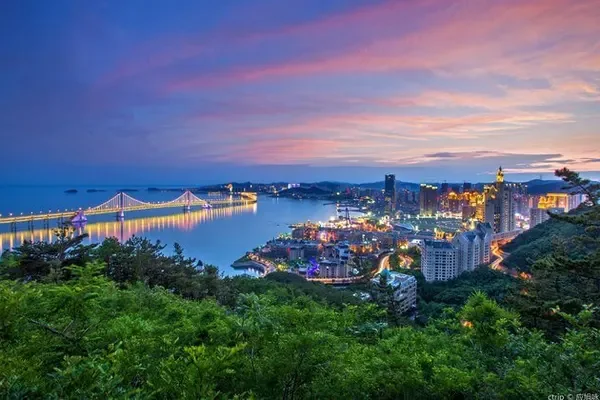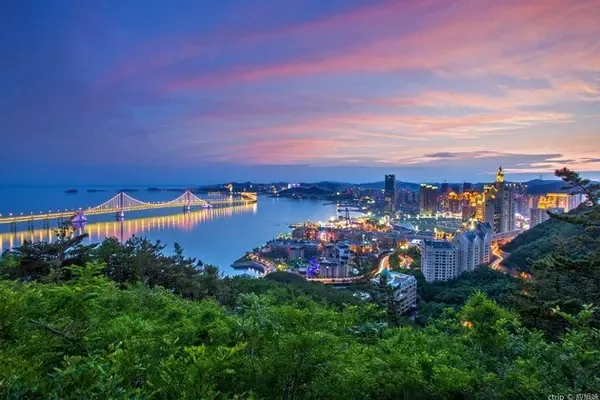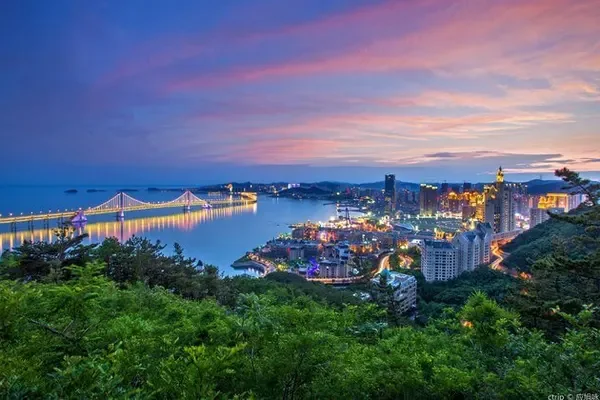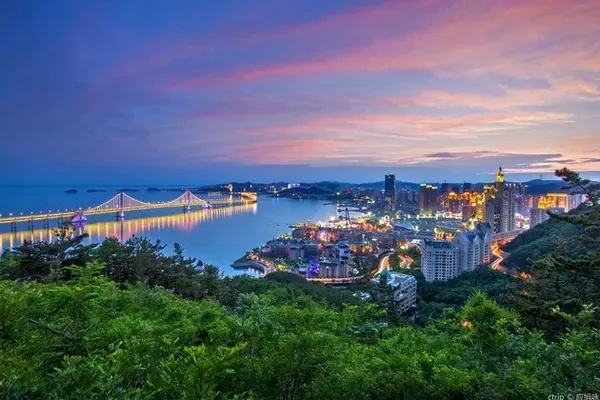For the convenience of visiting the Garden Expo, the hotel we chose to stay is located in the Hutong near Nanluoguxiang, very close to Shichahai Station of Metro Line 8, which is convenient for taking a car to the Garden Expo.
Depart from the hotel at 7:00 a.m., take subway line 8 to the terminal station Zhuxinzhuang, and take a special line bus to the Garden Expo at 8:00 a.m. The ticket is 16 yuan for a single trip. The journey takes about 1.5 hours and arrives at the Garden Expo 1 at about 9:30. door number.
It is very convenient to enter the park. You can buy tickets online and swipe your ID card to enter the park. Volunteers in the park distribute tour maps and guide routes. There are four pavilions (Botanical Pavilion, Chinese Pavilion, International Pavilion, Experience Pavilion) and two gardens (Chinese Garden, International Garden) at the Garden Expo. Since it is a horticultural expo, go to the Botanical Pavilion first, and queue for about 20 minutes to enter . Then the tour route is China Garden, China Pavilion, International Pavilion, watching float parades and performances, International Garden, and Experience Hall. The entrance of each hall is decorated with sound and light media display content, which is very modern. The Botanical Pavilion presents the goddess scattered flowers, the China Pavilion displays the map of thousands of miles of rivers and mountains, and the International Pavilion displays the African savannah.
Buy French sticks in the French Garden of the International Garden, and watch the parade of floats while eating French sticks; enjoy Italian coffee and French refreshments in the coffee shop of the experience hall, and Italian ice cream in the ice cream hall. Leave the park at 20:30, return by special bus or subway line 8, and arrive at Shichahai Station at 23:00. Eating wontons at the wonton stand at the entrance of the alley, the so-called wonton waiting shop made by the master chef, the taste is really not flattering.
Various plants are exhibited in the Botanical Pavilion, and all kinds of flowers compete for beauty. At this time, orchids are the main ones; the flowers of various provinces are displayed in the China Pavilion, which are similar with minor differences, and the flower arrangement exhibition area has some characteristics. The international pavilion is set up by China, selling goods from various countries, mainly crafts from various countries, and the salespersons are basically Chinese wearing foreign clothes. The rose and rose exhibition area of the international pavilion is worth seeing, and the Russian ice cream sold at the exit can be tasted. The main content of the experience hall is coffee, ice cream, tea, handicrafts, Chinese herbal medicine, etc. You can taste coffee and snacks at a high price. The Italian ice cream in the ice cream hall tastes good and the price is reasonable. Each province in the Chinese Garden has a small garden to display the geographical indications, landmark buildings, animals and plants of the province. It is not necessary to visit the Chinese Garden in its entirety, just choose those who are interested. The center of the Chinese Garden is the Peer Square. Each province Setting up a characteristic stone of this province and forming a circle may imply that the people of all ethnic groups in the country are united and working together for a well-off life. The International Park displays buildings with the characteristics of various countries. There is a building called "Swallow Building" in the Korean Garden, where you can take pictures in Korean national costumes for free; when you enter the Qatar Pavilion, the staff will give you a date palm for tourists to taste; Authentic French sticks are sold; German Garden sells German beer.
To visit the Garden Expo, if you don't queue up to visit the indoor pavilion, one day is enough. When there are many visitors, entering indoor pavilions such as the Botanical Pavilion, China Pavilion, and International Pavilion will limit the flow of people, and you may need to queue up, and the length of time is unpredictable.
The picture below shows the flower bed at the entrance of Gate 1 of the Garden Expo.


The picture below shows the shiny metal praying mantis in front of the botanical hall.

The picture on the right below is the entrance of the Botanical Museum, which was assisted by Shenzhen Vanke Group.

The picture below shows the Yongning Pavilion from the top of the Botanical Pavilion.

The picture below shows the shape of a giraffe made of vines on the top of the Botanical Pavilion.

The theme of the World Horticultural Exposition is flowers and gardening. All kinds of colorful and beautiful flowers in the park and exhibition hall are pleasing to the eye. Flowers exude a natural atmosphere, making people linger.
The next two pictures are the sea of flowers competing for beauty on the ground outside the Botanical Garden.


Various flowers in the Botanical Garden.






The next two pictures are beautiful Phalaenopsis.



The picture below is a light pink dendrobium flower.


The picture below is a pitcher plant that can eat small insects.


The picture below is a desert rose.

After visiting the Botanical Museum, walk to the China Pavilion. The distance between the pavilions is not close. There are two roads of battery cars in the park. Taking the battery cars can save energy, and walking can enjoy the scenery of the park along the way.
Visitors to the China Pavilion lined up in a long line, estimated to be more than half an hour. Opposite is the Chinese Garden, so enter the Chinese Garden first. Of course, Shaanxi people must first look at the Shaanxi Garden.
The Shaanxi Garden is characterized by imitation of Han and Tang architecture, and is characterized by the starting point of the Silk Road. In the garden, there are four treasures of the Qinling Mountains made of flowers and plants (pandas, crested ibis, golden monkeys and takins), Tang ladies and war horses. Tang Sancai and other cultural relics with Shaanxi characteristics.


The picture below is Jilin Garden, which is characterized by ginseng.

The exhibition stones of various provinces in the peer square in the center of the Chinese Garden, the picture below is the exhibition stone of Shaanxi (it looks like the map of Shaanxi, called Qin Yun).

The middle picture below is Henan Zhanshi.

Returning from the China Garden to the China Pavilion, there is no need to line up, and one can file in. The entrance of the China Pavilion is a circular roof similar to Fujian Tulou. Under the roof is the basement of the China Pavilion, where the water curtain flowing down from the circular roof can be seen. Pictures and text introductions of flowers are displayed on the walls under the circular roof.


In the China Pavilion, each province arranges its own exhibition hall with its own characteristic flowers and special products, and its garden design has its own creativity.
The baby ants and dwarves in the picture below add a lively atmosphere to the garden.


The picture below shows the entrance of the Henan Hall, which is very distinctive. The vase is an imitation of the national treasure bronze danhe square pot unearthed in Henan. The screen wall is inlaid with delicate porcelain peonies. A specialty of Henan.

There are various Phalaenopsis orchids displayed outside the Guizhou exhibition area. I have never seen them before, and they are very eye-opening.






The corridor on the basement floor of the China Pavilion is a multi-media production of "A Thousand Miles of Rivers and Mountains". "A Thousand Miles of Rivers and Mountains" is the work of Wang Ximeng in the Northern Song Dynasty and is a national treasure.
The basement of the China Pavilion displays several kinds of medicinal flowers. The next two pictures are flowering Dendrobium. Dendrobium belongs to Orchidaceae, and the flowers in this season's garden expo are mainly Orchidaceae.


Flower peacocks and the art of flower arrangement.



Flowers with forgotten names and roses with color gradients.


Enter the International Pavilion, which is the exhibition hall of various countries.




The picture below is the Myanmar exhibition hall.

There is an exhibition of roses and roses in the International Pavilion, where various roses and roses compete for beauty.















Float parades and performances, there are many foreign actors.





The Indian Garden of the International Garden.

The picture below shows the cappuccino, espresso and French pastries enjoyed in the experience hall.

The picture below is the meteorological hall in the experience hall.

The picture below is the traditional Chinese medicine honeysuckle.

The state banquet tableware exhibited in the experience hall, the picture below is the APEC state banquet tableware.

The picture below is the G20 state banquet tableware.

There are 4 experience halls, one is the exhibition hall of arts and crafts, Chinese herbal medicine, meteorology and Yanqing exhibition hall, one is the coffee exhibition hall, one is the tea exhibition hall, and the other is the ice cream exhibition hall. The gelato was delicious and the pistachio ice cream was delicious.
Yongning Pavilion at night.

Walking out of the garden, I made a long detour. Take the special bus back to Zhuxinzhuang, and take the subway line 8 back to the hotel.
Take a casual tour of Tiananmen Square and the Monument to the People's Heroes, and visit the National Museum of Beautiful Asia and the American Virginia Treasures and Art Exhibition - Yunbinzhuicui.

The Virginia Jewelry Art Exhibition in the United States-exquisite exhibits of cloud temples and pearls, the picture below is a jewelry necklace.



A variety of exquisite brooches.







When you come out of the hotel, you will find Drum Tower, Yandai Xiejie, Huoshen Temple and Shichahai. By the way, visit the Huoshen Temple near the hotel. The full name of the Huoshen Temple is "Chijian Huodezhenjun Temple", and it is free to visit. The Huoshen Temple was built in the Zhenguan period of the Tang Dynasty. It is located on the west side of the northern end of the central axis of Beijing. It is adjacent to the Drum Tower in the northeast and Shichahai in the west. The entrance of the Huoshen Temple is the Lingguan Hall, and the main hall is the Yinghuo Hall. Because the Vulcan is called the Huode Yinghuo Xingjun, the counterclockwise direction is the Yuelao Hall, the Cihang Hall, the Zhenwu Hall, the Taisui Hall, the God of Wealth Hall and the Sanyuan Temple. Official hall.


The picture below is Shichahai in the twilight, many people are fishing.

The picture below is Yandai Xiejie. Yandai Xiejie is similar to Kuanzhai Alley in Chengdu. It is a place to eat and sell local specialties. From Yandai Xiejie to the right is the Drum Tower, to the left is the Temple of Fire, and across Yandai Xiejie is Shichahai.

The Bell and Drum Tower is located at the northernmost end of the central axis of Beijing. The Bell Tower is located in the north and the Drum Tower is located in the south. The Bell Tower is currently closed for maintenance. Tickets for the Drum Tower are 20 yuan, half price for those over 60 years old. The picture below is the Drum Tower. There is an exhibition of ancient timing relics on the Drum Tower.

Below is the bell tower.

The stairs to the Drum Tower are very steep. On the Drum Tower, you can look south to the central axis of Beijing. The picture below shows the stairs to climb the Drum Tower.

The picture below shows the city of Beijing looking southward from the Drum Tower, with the Wanchun Pavilion on Jingshan in the middle and the White Pagoda in Beihai on the right.

Return to the hotel and visit the Ma Xulun Memorial Hall and the Kaiming Academy next to the hotel. Mr. Ma Xulun is the founder and leader of the Democratic Party-Democracy Promotion Association. Democracy is mainly engaged in education, culture, and publishing. A party of political alliance nature, it is one of the eight democratic parties participating in politics. The Memorial Hall and the Kaiming Academy should be based on Mr. Ma Xulun's private residence.



Follow the alley to find Wanrong's former residence marked on the Baidu map. Wanrong's former residence is not clearly marked, nor is it open. The former residence of Wanrong is a large courtyard, and in a part of it there is a living art museum called "Weiwei". The handmade artworks displayed in the museum are very creative, but expensive.



There are many sculptures in the shape of pigs. The Mr. Pig and the four Miss Pigs in the picture below are very interesting.

From the Art Museum to Beihai, Beihai Park is free of charge for those over 60 years old, which is very humane. Sitting on a bench beside the North Sea in a daze, feel the breeze blowing on your face, blending people and scenery, watching the lake ripples and ducks swimming.
The hotel is not far from Beihai. The picture below is Beihai White Tower.

The picture below is a part of Nine Dragon Wall.




